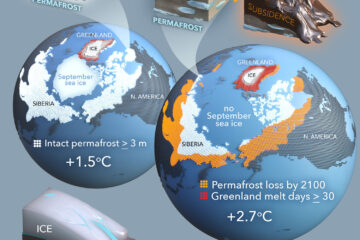Denitrifying and diazotrophic community responses to artificial warming in permafrost and tallgrass prairie soils
Increasing temperatures have been shown to impact soil biogeochemical processes, although the corresponding changes to the underlying microbial functional communities are not well understood. Alterations in the nitrogen (N) cycling functional component are particularly important as N availability can affect microbial decomposition rates of soil organic matter and influence plant productivity. To assess changes in the microbial component responsible for these changes, the composition of the N-fixing (nifH), and denitrifying (nirS, nirK, nosZ) soil microbial communities was assessed by targeted pyrosequencing of functional genes involved in N cycling in two major biomes where the experimental effect of climate warming is under investigation, a tallgrass prairie in Oklahoma (OK) and the active layer above permafrost in Alaska (AK). Raw reads were processed for quality, translated with frameshift correction, and a total of 313,842 amino acid sequences were clustered and linked to a nearest neighbor using reference datasets. The number of OTUs recovered ranged from 231 (NifH) to 862 (NirK). The N functional microbial communities of the prairie, which had experienced a decade of experimental warming were the most affected with changes in the richness and/or overall structure of NifH, NirS, NirK and NosZ. In contrast, the AK permafrost communities, which had experienced only 1 year of warming, showed decreased richness and a structural change only with the nirK-harboring bacterial community. A highly divergent nirK-harboring bacterial community was identified in the permafrost soils, suggesting much novelty, while other N functional communities exhibited similar relatedness to the reference databases, regardless of site. Prairie and permafrost soils also harbored highly divergent communities due mostly to differing major populations.


